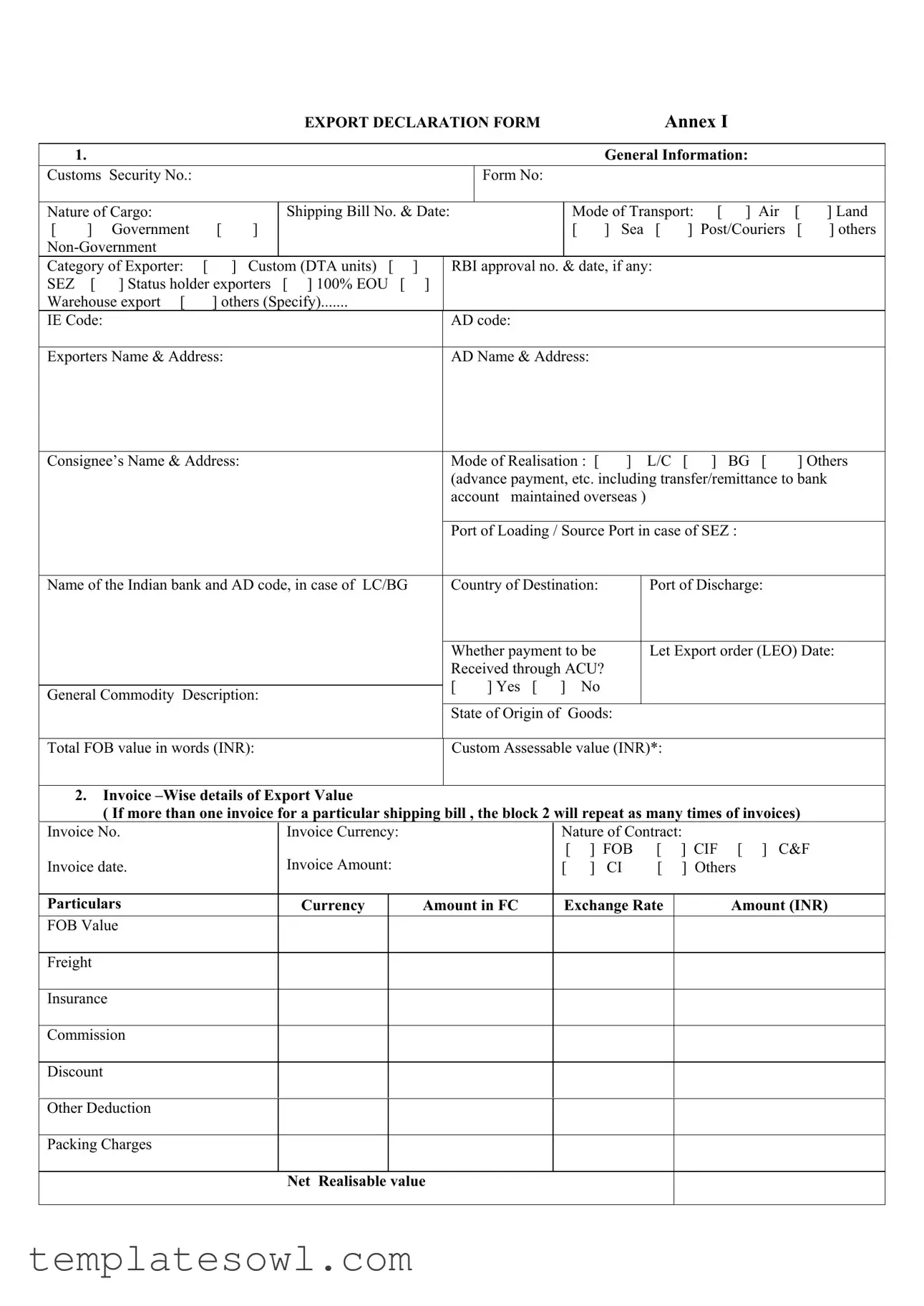What is the purpose of the Export Declaration Form?
The Export Declaration Form serves as a primary document for exporters in India to declare the details of goods being exported. It ensures compliance with customs regulations and helps in monitoring foreign exchange transactions. The form provides essential information about the cargo, mode of transport, and payment terms, facilitating the smooth processing of exports.
Who is required to fill out the Export Declaration Form?
Any individual or organization involved in exporting goods from India must complete the Export Declaration Form. This includes manufacturers, traders, and other participants in the export process. Different categories of exporters, such as Custom, RBI-approved, and 100% EOU, must accurately fill out the form to meet regulatory requirements.
What information needs to be included in the Export Declaration Form?
The form requires various details, including the exporter’s name and address, consignee’s name and address, shipping bill number and date, mode of transport, and commodity description. Additionally, financial information such as the total FOB value and invoice-wise details should be provided. Accurate representation of all these details is crucial for compliance with customs authorities.
What happens if the Export Declaration Form is not filled correctly?
Incorrect or incomplete information on the Export Declaration Form can lead to delays in processing the export shipment. Customs officials may reject the export, resulting in additional fines or penalties. In certain cases, persistent inaccuracies could affect the exporter’s credibility and lead to increased scrutiny in future transactions.
What is the significance of the declaration made by the exporter at the end of the form?
The declaration signifies that the exporter confirms the correctness of the provided information and acknowledges that they are the seller of the goods. This legal assertion is important for safeguarding compliance with the Foreign Exchange Management Act. It also indicates the exporter’s responsibility to remit the foreign exchange value to the bank as per the regulations.
What should exporters do if they have further questions or need assistance with the Export Declaration Form?
If exporters have questions about filling out the Export Declaration Form or need assistance, they should contact their authorized dealer bank or a customs consultant. Additionally, they can reach out to the local customs office for specific guidance. Ensuring clarity on the process will help avoid potential compliance issues.

